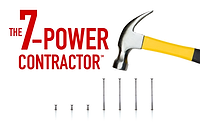
Aren’t you a customer, too? So how do you feel if a complaint goes unresolved? We need to deal with any complaint in a fast and friendly manner, and in a consistent way. And the longer we take to resolve a customer’s problem, the more difficult it is to make him or her happy.
Every day, I teach a process to customer service reps to better serve the customer each time. Read my thoughts below on how to respond to common complaints and then I’ll explain what the “Customer Complaint Form” is all about.
“Our policy is to respond to any emergency call the same day whenever possible. During very busy times, we sometimes can’t respond that quickly.”
Show empathy toward the customer’s predicament. Calm the customer and explain that you’re having an unusually heavy load of calls right now. Either say you will send the next available tech or, if possible, speak with the dispatcher to better pinpoint a time range.
Try your best to at least narrow the expected arrival time down to morning or afternoon. Explain that, “We had someone in your area that we preferred to send, but if time is an issue, we can send someone else. We’ll call you and let you know when the tech is on the way.”
Listen carefully to the customer and apologize for any inconvenience. Say you will send someone back to the job to inspect the tech’s work. Thank the customer for calling you with this important feedback.
Tell the customer you’ll relay his or her complaint to the service manager for follow-up with the tech. During the call, fill out a Customer Complaint Form; you’ll find an example on page 31. Complete this form during the call.
Immediately after the call, find the service manager. Give him the Customer Complaint Form and the job file. Then, explain any other detail he needs to know and hand off the call to him.
You can usually avoid this complaint by having the tech get a signed ticket from the customer that shows the proper amount you will be charging, whether it’s a flat-rate task fee or a diagnostic fee.
If you don’t have a signed invoice, the service manager should negotiate the price and record the incident in writing for follow-up with the responsible tech. (Note: The CSR must complete the Customer Complaint Form while on the call and supply a copy of the invoice with the complaint. This information is given to the service manager.)
The Customer Complaint Form
I created this form so there would be a way to track whether a customer complaint is a potential callback. I use the word “potential” because, at this point, you don’t know if it’s a legitimate callback or not.It’s important that you know I define a callback as any reason a customer calls us to complain about anything within 30 days of our visit.
Here are some examples:
- A sales callback would be when a
customer calls to complain about the price after the work was done and the
price was quoted before the work was started. It’s typically because the sales
process was not followed to build value over price.
- An operational callback would be when a customer would call to
complain about a mess that was left, the floor was tracked up or that the tech
busted the screen door on the way out.
- A technical callback would be when a customer calls to complain that the toilet you fixed is still not working.
Remember to fill out all the information in the Customer Complaint Form and assure the customer that a manager will call him or her back as soon as possible. In the meantime, tell the customer any payment will be put on hold and not processed (if it has not been done already) without the customer’s approval.
Complete the form, find the invoice and present them to the service manager.
Do this process and not only will you be able to resolve potential callbacks quickly and fairly, but you’ll learn what training you and your staff need to minimize potential callbacks from ever happening.

